Snow for Trees: Forestry Techniques for a Changing Climate
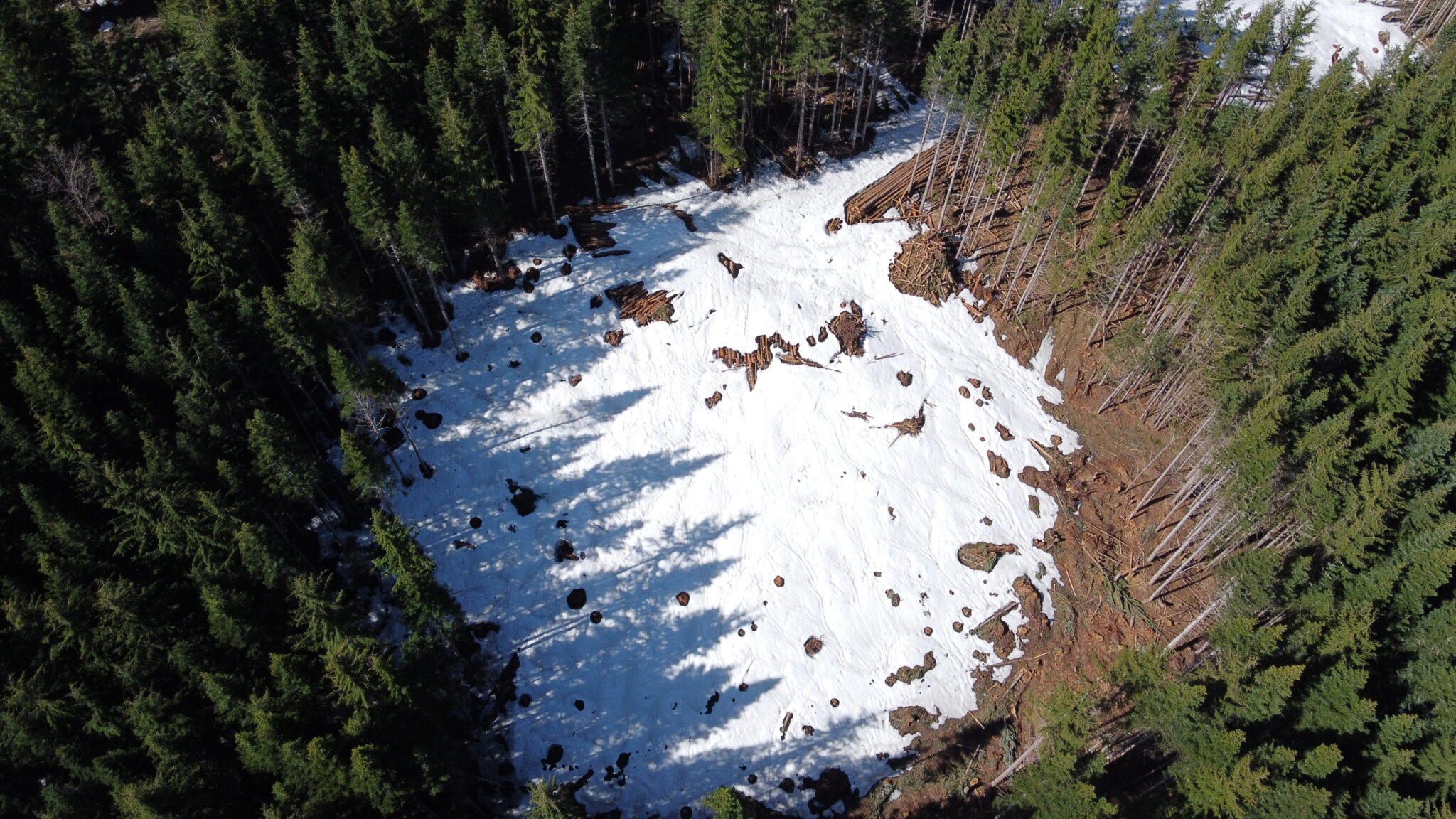
Originally published in the Jul/Aug/Sept 2023 issue of Western Forester.
Climate change is impacting landscapes on a large scale, and forests – one of our largest carbon sinks and a critical part of any climate mitigation strategy – are at risk. If climate change is making forests more vulnerable, can innovative forest stewardship make them more resilient, and sustain the role they play in watershed protection? This question led us at Northwest Natural Resource Group (NNRG) to create an experiment in practical forestry methods, in collaboration with forward-thinking partner organizations.
The Nisqually Community Forest (NCF) is located in the foothills of Mount Rainier in Washington State, in the upper Nisqually River watershed. Forests across most of this landscape have been clearcut two or three times and replanted at high densities, leading to homogeneous stands of young trees competing for sunlight and increasingly limited soil moisture. NCF is on a mission to use forest management techniques to conserve and increase stream flows in the watershed, which provides valuable habitat for threatened Chinook salmon and steelhead populations, while also improving forest resilience in the face of climate change.
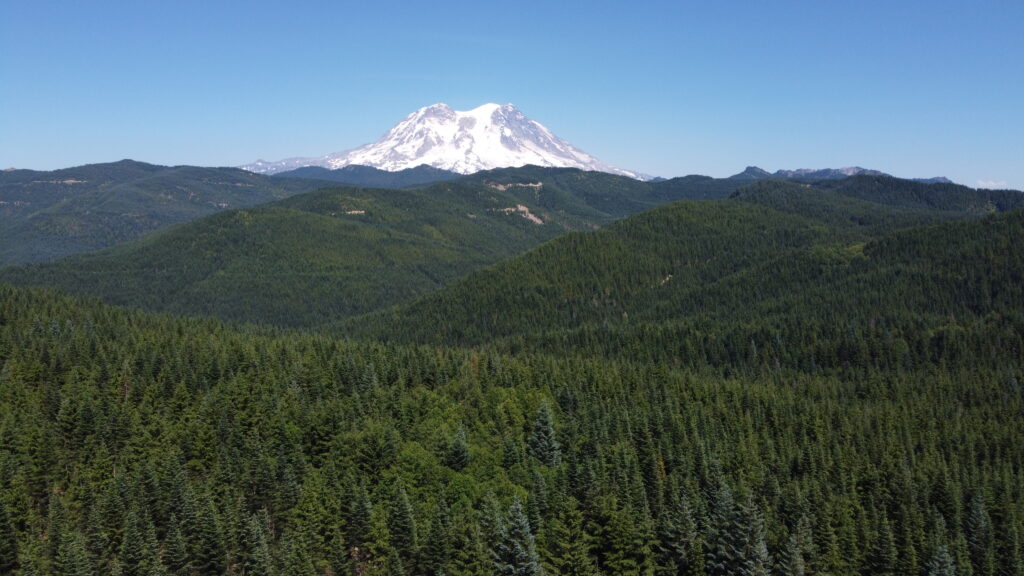
In collaboration with NNRG, NCF is taking an ecological forest management approach of thinning the forest and managing for older trees that can better withstand the impacts of climate change, including greater resistance to fire and disease. Thinning forests can also increase drought tolerance by reducing the number of stems competing for finite water resources.
The connection between tree canopy cover and water
Tree canopy cover influences water availability in the forest. Continuous canopy cover, such as the tree crowns of overstocked stands, can intercept snow and cause it to melt or sublimate before reaching the ground. This can lead to less snow accumulation on the ground through the winter and then to drier soils in the summer. This is especially true on the west side of the Cascades, as the east side naturally sees sparser forests and more winter sun. Forestry techniques like thinning and gap cuts (small clearcuts around 0.5 to 1 acre in size) are sometimes recommended to increase snowpack, and thereby increase water availability and forest resilience in the face of drier conditions.
NNRG wanted to provide local proof of concept for these forestry methods, and confirm they are likely to lead to increased snow accumulation and slower snow melt. Over the past two years, we’ve used several different methods to monitor the snow accumulation across three forest types: – gap cut, thinned, and control. Each area was monitored through a combination of trail cam photos, snow depth measurement transects, and snow water equivalent measurements.
Our expectation was that more snow would accumulate in the gaps and the thinned forest than the control (unthinned) forest, where snow would be intercepted by tree crowns and would sublimate or melt more quickly than in areas with less dense canopy cover. We expected to see the most snow accumulation in the gaps.
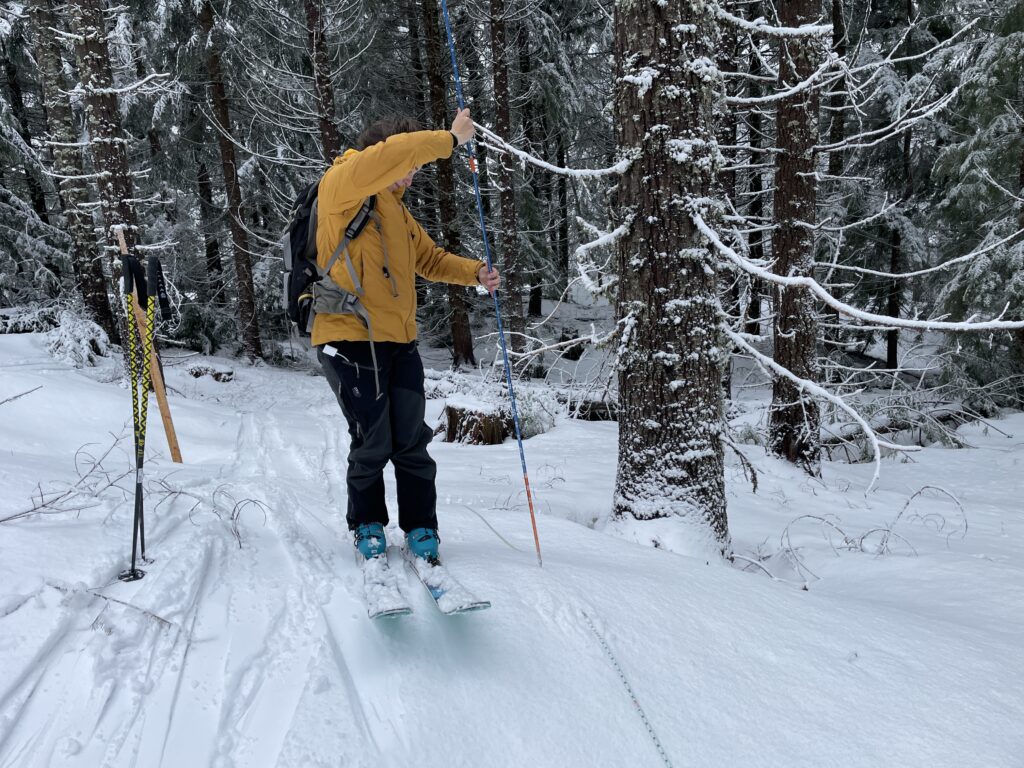
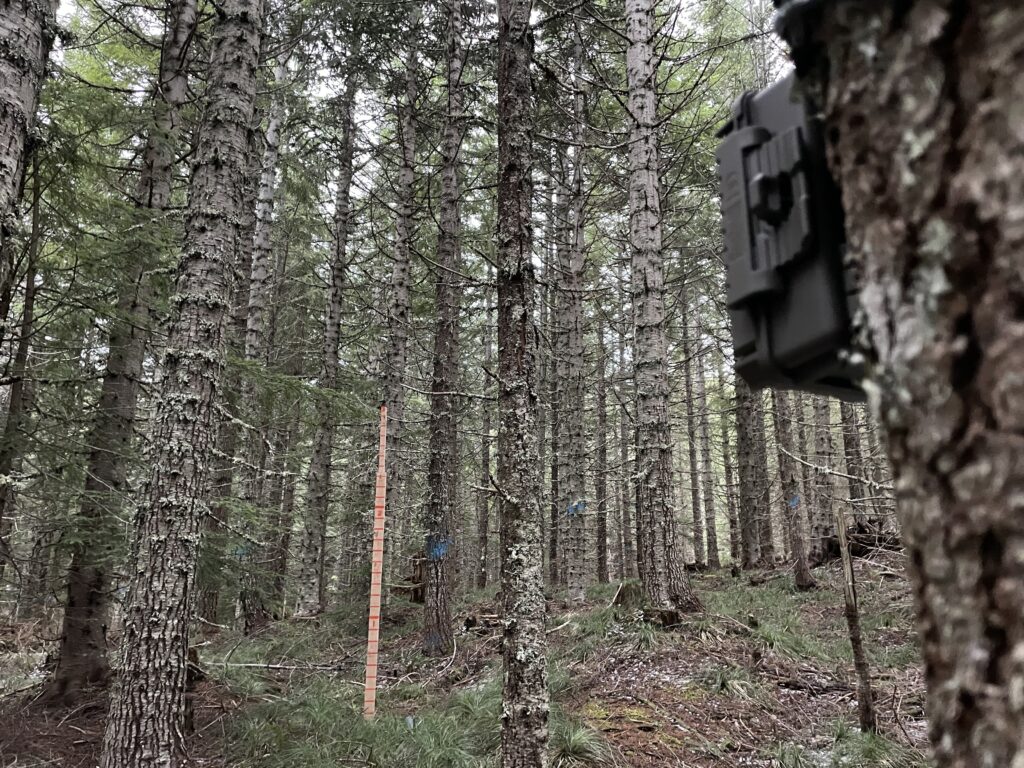
Snow and soil moisture
The results indeed showed that significantly more snow accumulated in the gaps, and, key to our restoration work, the thinned forest also accumulated more snow than the unthinned forest. Thinning is the main forest management strategy we use at NNRG to improve forest health and generate revenue while also maintaining carbon stocks, providing cooling shade, and creating increasingly diverse wildlife habitat as the stands mature.
The snow in the gaps and thinned areas also lasted significantly longer into spring – when the snow in the unthinned control forest had fully melted, the gap still had about three feet and the thinned areas had nearly a foot of snowpack. Stretching out the snowmelt later into the spring can reduce the impacts of summer drought on trees and increase the supply of cool water to streams, which will be increasingly essential for fish habitat as our climate warms.
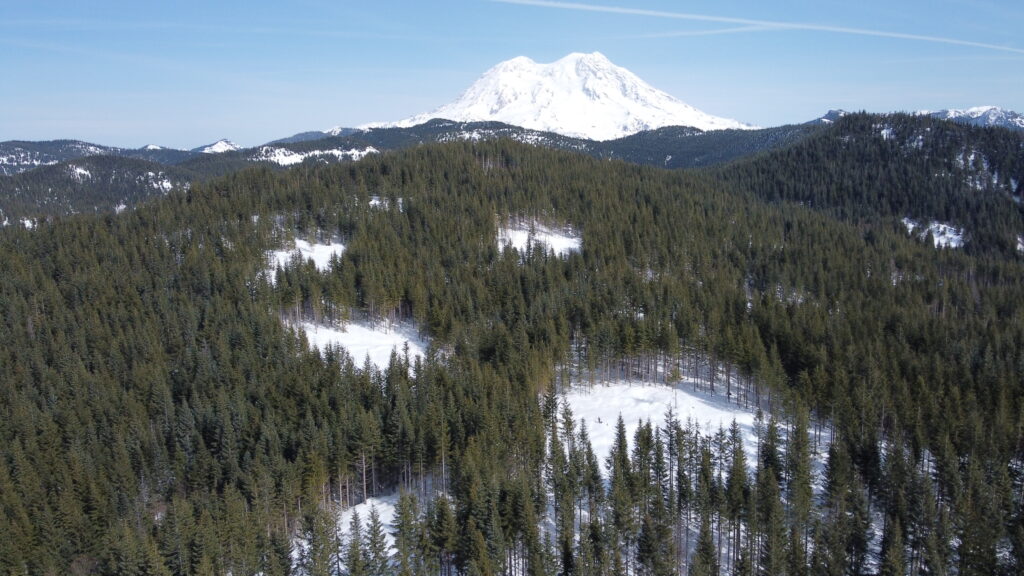
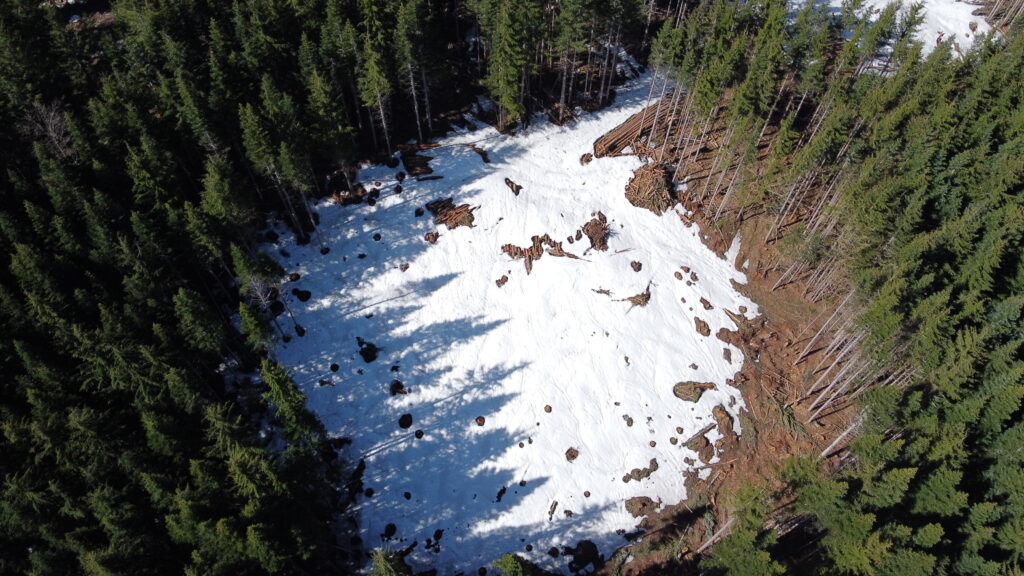
As an extension of this research, we’re also experimenting replanting the gaps in the forest with seedlings sourced from lower elevations and more southern seed zones – a strategy often referred to as “assisted migration.” The theory behind assisted migration is that the offsite seedlings will be more resilient to the warmer and drier conditions of the future. Over time, the gaps will be filled with young trees from what is hopefully a more drought-tolerant genotype of local species.
This summer, we’ve started a soil moisture monitoring program to quantify the influence of the snowpack on soil moisture in each of the different management areas. We’re especially interested to see how well the different stands maintain their soil moisture throughout the summer. If you’d like to follow along as we release study updates, please subscribe to our newsletter: https://www.nnrg.org/subscribe/
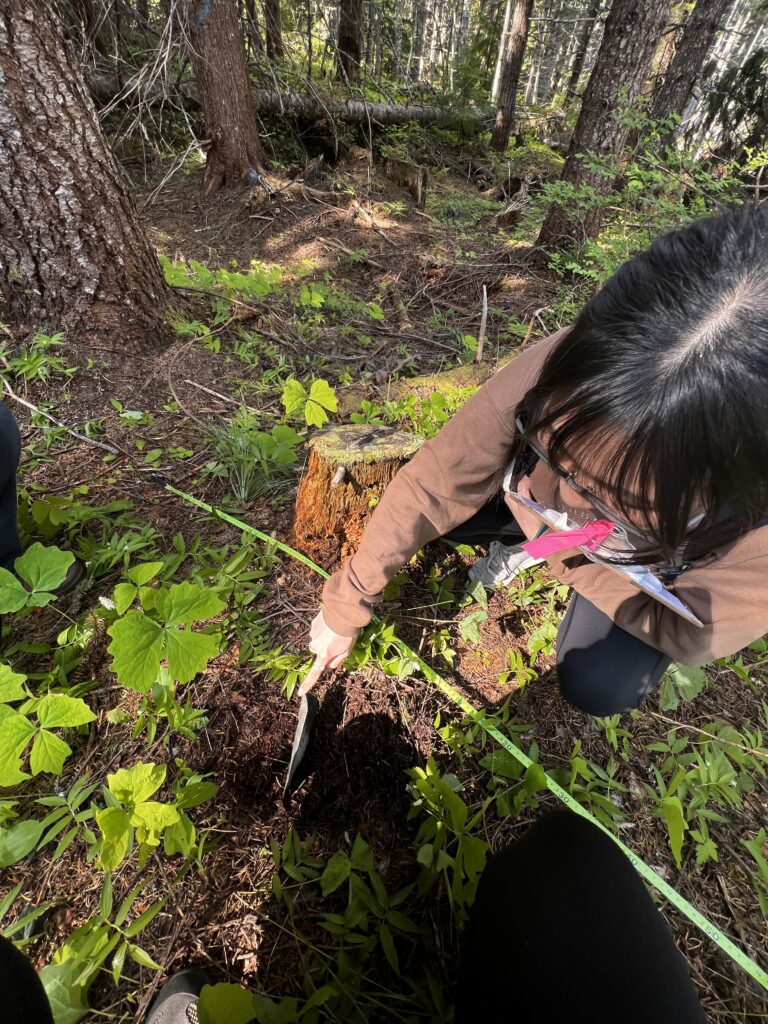
Climate change forces us to think big. The scale of change, even locally, involves millions of acres, many of which are overstocked and vulnerable to the host of stresses that climate change exacerbates. But beyond thinking big, we need to learn and implement; large-scale changes have happened before and can happen again. The question we need to ask now is – how do we help the forest, so it can help us?

Leave a Reply